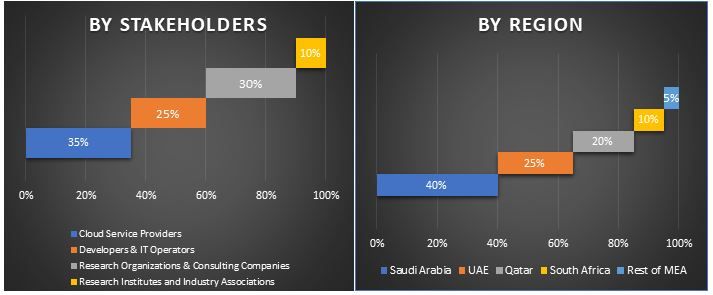- Home
- Chi siamo
- Settore
- Servizi
- Lettura
- Contattaci
Mercato della trasformazione digitale in America Latina: analisi attuale e previsioni (2021-2027)
Enfasi su Componente [Soluzioni (Cloud Computing, Big Data & Analytics, Mobility, Disruptive Technology, Social Media); Servizi (Professional Services, System Integration)]; per Tipo di Implementazione (On-Premises, Cloud); per Utente Finale (Grandi Imprese, Piccole e Medie Imprese); Settori Verticali (BFSI, Government, Healthcare, Telecom & IT, Automotive, Retail & Consumer Goods, Media & Entertainment, Manufacturing, Altri settori) e Paese

La digitalizzazione è la causa di trasformazioni radicali e su vasta scala in molteplici aspetti del business, fornendo opportunità senza precedenti per la creazione e l'acquisizione di valore, rappresentando al contempo una grande fonte di rischio. I rapidi progressi della tecnologia digitale stanno ridefinendo la società. Le organizzazioni oggi si rendono sempre più conto di non potersi più concentrare solo sulla vendita di prodotti; devono vendere un'esperienza. Un numero crescente di prodotti oggi consuma e genera dati, e molti sono interconnessi attraverso il Web. Grazie a questa maggiore intelligenza, il loro utilizzo può essere monitorato, è possibile offrire proattivamente servizi aggiuntivi o fornire manutenzione quando viene rilevato un problema. Le tecnologie digitali stanno rimodellando drasticamente ogni settore e diverse aziende stanno compiendo sforzi di cambiamento su larga scala per acquisire i vantaggi del trend di trasformazione digitale in corso o semplicemente per stare al passo con i loro concorrenti. La tecnologia di accesso mobile leader, il 4G, rappresentava il 41% delle connessioni totali nel 2018. Si prevede che il 4G sarà la tecnologia dominante nel 2020, continuando a crescere anche dopo l'inizio del 5G nel 2020. Ciò è evidente con le implementazioni LTE-A degli operatori; un totale di 22 operatori hanno lanciato velocità che supportano da 100 Mbps a 1 Gbps fino ad oggi. Un ulteriore piano di 10 operatori prevede di farlo nei prossimi anni. Ad esempio, si prevede che gli abbonati mobili unici raggiungeranno circa 490 milioni in America Latina entro il 2025. Tre mercati, tra cui Brasile, Messico e Argentina, rappresenteranno oltre il 33% della quota complessiva di abbonati mobili unici in America Latina entro il 2025.
Previsioni di lancio del 5G per Paese, America Latina
Approfondimenti presentati nel rapporto
"Tra i componenti, il segmento delle soluzioni detiene la quota maggiore."
In base al componente, il mercato della trasformazione digitale dell'America Latina è suddiviso in soluzioni e servizi. Il sottosegmento delle soluzioni è ulteriormente suddiviso in cloud computing, big data e analisi, mobilità, tecnologia dirompente e social media. Inoltre, il segmento dei servizi è suddiviso in servizi professionali e integrazione di sistemi. Il segmento delle soluzioni ha dominato il mercato nel 2020. Tuttavia, si prevede che il segmento dei servizi registrerà la crescita del CAGR più elevata del 18,09% durante il periodo di previsione (2021-2027).
"Tra i tipi di implementazione, il cloud ha dominato il mercato nel 2020."
In base al tipo di implementazione, il mercato è segmentato in implementazione on-premise e cloud. Attualmente, il modello di implementazione cloud ha dominato il mercato e ha generato entrate per 324,5 miliardi di dollari nel 2020. Si prevede che il segmento on-premise registrerà una crescita del CAGR del 12,9% durante il periodo di previsione.
"Tra gli utenti finali, si prevede che le grandi imprese domineranno il mercato durante il periodo analizzato."
In base all'utente finale, il mercato della trasformazione digitale dell'America Latina è suddiviso in grandi imprese e PMI. A causa dell'alto costo dell'implementazione della tecnologia digitale, le grandi imprese hanno investito maggiormente nella tecnologia digitale. Il segmento ha generato entrate per 2,79 miliardi di dollari nel 2020. Si prevede che il segmento delle PMI registrerà una crescita del CAGR del 16,37% durante il periodo analizzato.
"Tra i settori verticali, il settore bancario dei servizi finanziari e assicurativi ha dominato il mercato nel 2020."
In base al settore verticale, il mercato è frammentato in BFSI, sanità, telecomunicazioni e IT, automotive, istruzione, vendita al dettaglio e beni di consumo, media e intrattenimento, produzione, governo e altri. Nel settore BFSI, la trasformazione digitale aiuta a rendere le transazioni finanziarie veloci, sicure, semplici e prive di errori. BFSI ha generato le entrate più alte pari a 9,26 miliardi di dollari nel 2020.
"Gli Stati Uniti rappresentano i mercati più grandi nel mercato della trasformazione digitale dell'America Latina."
Per una migliore comprensione della penetrazione nel mercato della trasformazione digitale, il rapporto fornisce un'analisi dettagliata dei principali paesi, tra cui l'America Latina (Brasile, Argentina, Resto dell'America Latina). Alcuni dei principali attori che operano nel mercato includono IBM Corporation, Cognizant, SAP SE, Dell, Microsoft Corporation, Adobe Systems Incorporated, Accenture PLC, Capgemini, Oracle Corporation e Google Inc.
Motivi per acquistare questo rapporto:
- Lo studio include l'analisi delle dimensioni del mercato e delle previsioni convalidate da esperti chiave del settore autenticati
- Il rapporto presenta una rapida panoramica delle prestazioni complessive del settore a colpo d'occhio
- Il rapporto copre un'analisi approfondita dei principali pari del settore con un focus primario sui principali dati finanziari aziendali, sul portafoglio prodotti, sulle strategie di espansione e sugli sviluppi recenti
- Esame dettagliato dei fattori trainanti, delle restrizioni, delle tendenze chiave e delle opportunità prevalenti nel settore
- Lo studio copre in modo completo il mercato attraverso diversi segmenti
- Analisi approfondita a livello di paese del settore
Opzioni di personalizzazione:
Il mercato della trasformazione digitale dell'America Latina può essere ulteriormente personalizzato in base alle esigenze o a qualsiasi altro segmento di mercato. Inoltre, UMI comprende che potresti avere le tue esigenze aziendali, quindi sentiti libero di contattarci per ottenere un rapporto che si adatti completamente alle tue esigenze.
Indice
L'analisi del mercato storico, la stima del mercato attuale e la previsione del futuro del mercato della trasformazione digitale MEA sono stati i tre passaggi principali intrapresi per creare e analizzare l'adozione della trasformazione digitale in vari settori verticali nei principali paesi MEA. È stata condotta un'esaustiva ricerca secondaria per raccogliere i dati storici del mercato e stimare le dimensioni attuali del mercato. In secondo luogo, per convalidare queste informazioni, sono state prese in considerazione numerose scoperte e ipotesi. Inoltre, sono state condotte anche esaustive interviste primarie con esperti del settore in tutta la catena del valore del settore della trasformazione digitale. Dopo l'assunzione e la convalida dei dati di mercato attraverso interviste primarie, abbiamo impiegato un approccio bottom-up per prevedere le dimensioni complete del mercato. Successivamente, sono stati adottati metodi di suddivisione del mercato e triangolazione dei dati per stimare e analizzare le dimensioni del mercato dei segmenti e dei sottosegmenti a cui appartiene il settore. La metodologia dettagliata è spiegata di seguito:
Analisi delle dimensioni storiche del mercato
Passaggio 1: studio approfondito delle fonti secondarie:
È stato condotto uno studio secondario dettagliato per ottenere le dimensioni storiche del mercato della trasformazione digitale MEA attraverso fonti interne all'azienda come relazioni annuali e bilanci, presentazioni sulle performance, comunicati stampa, ecc., e fonti esterne tra cui riviste, notizie e articoli, pubblicazioni governative, pubblicazioni dei concorrenti, rapporti di settore, database di terze parti e altre pubblicazioni credibili.
Passaggio 2: segmentazione del mercato:
Dopo aver ottenuto le dimensioni storiche del mercato della trasformazione digitale, abbiamo condotto un'analisi secondaria dettagliata per raccogliere informazioni storiche sul mercato e quote per diversi segmenti e sottosegmenti per le principali regioni. I principali segmenti inclusi nel rapporto sono per componente, tipo di implementazione, utente finale e settori verticali. Sono state condotte ulteriori analisi a livello di paese per valutare l'adozione complessiva della trasformazione digitale nella regione MEA.
Passaggio 3: analisi dei fattori:
Dopo aver acquisito le dimensioni storiche del mercato di diversi segmenti e sottosegmenti, abbiamo condotto una analisi dei fattori dettagliata per stimare le dimensioni attuali del mercato della trasformazione digitale nella regione MEA. Inoltre, abbiamo condotto un'analisi dei fattori utilizzando variabili dipendenti e indipendenti come la crescita della penetrazione delle tecnologie digitali in diversi settori e varie iniziative governative nella regione. È stata condotta un'analisi approfondita per lo scenario della domanda e dell'offerta considerando le principali partnership, fusioni e acquisizioni, espansione aziendale e lanci di prodotti nel settore della trasformazione digitale MEA.
Stima e previsione delle dimensioni attuali del mercato
Dimensionamento attuale del mercato: sulla base di informazioni utili dai 3 passaggi precedenti, siamo giunti alle dimensioni attuali del mercato, agli attori chiave nel mercato della trasformazione digitale MEA e alle quote di mercato dei segmenti. Tutte le quote percentuali richieste e le suddivisioni del mercato sono state determinate utilizzando l'approccio secondario sopra menzionato e sono state verificate attraverso interviste primarie.
Stima e previsione: per la stima e la previsione del mercato, sono stati assegnati pesi a diversi fattori, inclusi driver e tendenze, vincoli e opportunità disponibili per le parti interessate. Dopo aver analizzato questi fattori, sono state applicate tecniche di previsione pertinenti, ovvero l'approccio bottom-up, per arrivare alla previsione di mercato fino al 2027 per diversi segmenti e sottosegmenti nei principali paesi della regione MEA. La metodologia di ricerca adottata per stimare le dimensioni del mercato comprende:
- Le dimensioni del mercato del settore, in termini di valore (US$) e il tasso di adozione della trasformazione digitale nei principali mercati
- Tutte le quote percentuali, le suddivisioni e le ripartizioni dei segmenti e sottosegmenti di mercato
- Attori chiave nel mercato della trasformazione digitale in termini di servizi offerti. Inoltre, le strategie di crescita adottate da questi attori per competere nel mercato in rapida crescita.
Convalida delle dimensioni e della quota di mercato
Ricerca primaria: sono state condotte interviste approfondite con i Key Opinion Leader (KOL) tra cui dirigenti di alto livello (CXO/VP, responsabile vendite, responsabile marketing, responsabile operativo e responsabile regionale, responsabile paese, ecc.) nei principali paesi. I risultati della ricerca primaria sono stati quindi riassunti ed è stata eseguita un'analisi statistica per dimostrare l'ipotesi dichiarata. Gli input della ricerca primaria sono stati consolidati con i risultati secondari, trasformando quindi le informazioni in informazioni utili.
Suddivisione dei partecipanti primari in diverse regioni
Ingegneria di mercato
È stata impiegata la tecnica di triangolazione dei dati per completare la stima complessiva del mercato e per arrivare a numeri statistici precisi di ciascun segmento e sottosegmento del mercato della trasformazione digitale MEA. I dati sono stati suddivisi in diversi segmenti e sottosegmenti dopo aver studiato vari parametri e tendenze nelle aree di componente, tipo di implementazione, utente finale e settori verticali.
L'obiettivo principale dello studio di mercato sulla trasformazione digitale
Le tendenze di mercato attuali e future del mercato della trasformazione digitale MEA sono individuate nello studio. Gli investitori possono ottenere informazioni strategiche per basare la loro discrezione per gli investimenti dall'analisi qualitativa e quantitativa eseguita nello studio. Le tendenze di mercato attuali e future hanno determinato l'attrattiva complessiva del mercato a livello di paese, fornendo una piattaforma per il partecipante industriale per sfruttare il mercato non sfruttato per beneficiare come vantaggio del first-mover. Altri obiettivi quantitativi degli studi includono:
- Analizzare le dimensioni attuali e previste del mercato della trasformazione digitale in termini di valore (US$). Inoltre, analizzare le dimensioni attuali e previste del mercato di diversi segmenti e sottosegmenti
- I segmenti nello studio includono aree di componente, tipo di implementazione, utente finale e settori verticali
- Analisi definita del quadro normativo per il settore della trasformazione digitale MEA
- Analizzare la catena del valore coinvolta con la presenza di vari intermediari, insieme all'analisi del comportamento dei clienti e dei concorrenti del settore
- Analizzare le dimensioni attuali e previste del mercato della trasformazione digitale per i principali paesi MEA
- I principali paesi studiati nel rapporto includono Arabia Saudita, Emirati Arabi Uniti, Qatar, Sud Africa e Resto del MEA
- Profili aziendali degli operatori del mercato della trasformazione digitale e le strategie di crescita da essi adottate per sostenersi nel mercato in rapida crescita
- Analisi approfondita a livello di paese del settore
Correlati Report
I clienti che hanno acquistato questo articolo hanno acquistato anche












